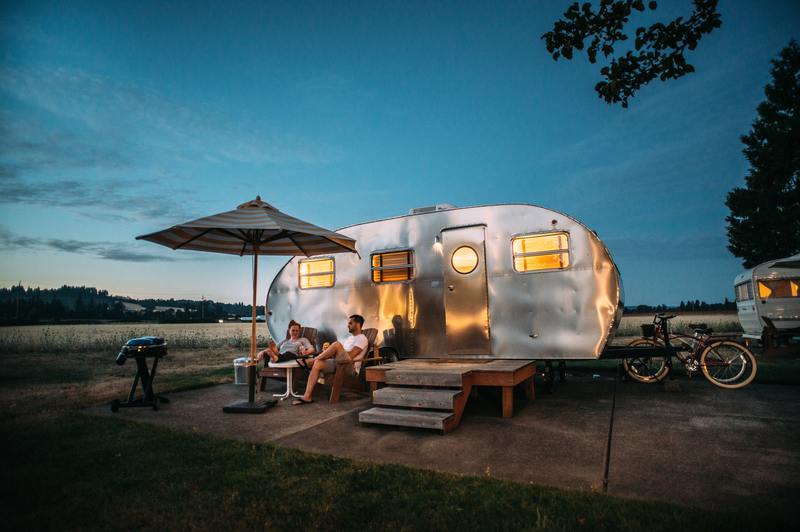In this article, we have four ways on how to keep mold out of camper during storage. Most are effortless to do, maybe except for checking for leaks.
Even so, they are necessary for keeping your camper mold-free. Please read until the end of this mold prevention article!

Mold On Campers
Campers are a necessity for avid travelers. However, they can be a handful to maintain.
They may require several repairs over the years, and they’re also vulnerable to mold. This is why we’ll talk about keeping them mold-free in this article. First, let’s talk about how mold develops and the signs of mold growth in campers.
How does mold develop on campers?
Seasonal changes can affect campers. During summer, the humid conditions lead to mold growth. During winter, condensation occurs, which leads to mold contamination as well.
However, mold is more likely to form during the winter season. Condensation is a big issue for campers as it damages multiple structures — from floors to walls to furniture.
Condensation causes rust on metal parts and rots on wood. It causes water damage, which then results in mold growth.
Another reason for mold growth is broken seals on your windows and doors. During the rainy season, damaged caulk lets in moisture, which then leads to mold formation.
Lastly, wet gear inside the camper invites mold spores to settle on them. So, do not dry your wet stuff inside the RV. If you are dealing camper water damage, this article about repairing water-damaged RV floors may help.
What are the tell-tale signs of mold growth on campers?
One of the obvious signs of mold growth on campers is the smell. If you notice a dank scent in your RV, then it means you have a mold problem.
Another sign of mold contamination is the stains on your carpet, flooring, or walls. They can be black, green, white, or blue stains.
If you are having trouble identifying mold, here’s a helpful guide on identifying mold by color. We advise you to tackle mold issues as soon as you detect them so they won’t affect your camper’s integrity or give you health-related concerns.
Tips On Keeping Campers Mold-Free During Storage
1. Keep your camper well-ventilated
When you’re not using your camper, open the windows. Ensure that you’re storing your RV in a safe place where no pests would go in. Encourage airflow in and out of your camper to prevent moisture from being trapped inside.
However, if it is humid outside, then close your camper’s windows. Ensure that the interior is dry instead.
2. Check your plumbing
Since water damage is the leading cause of mold growth, ensure your plumbing system is in order before storing your camper. Otherwise, the leaks would lead to rot or corrosion and would inevitably lead to mold contamination.
3. Inspect and replace the seals
Inspect your roof and your windows for broken caulking. Then, repair them immediately. Tears or holes on your camper’s roof may give way to water damage, especially from where you stored your RV.
4. Dehumidifier
Lastly, regularly dehumidify your camper and where you store it. Maintain the humidity levels of your RV to prevent mold growth.
Steps on removing mold from campers
Mold growth prevention is ideal. However, if it can’t be achieved due to unavoidable circumstances, here’s how you can remove mold from your camper:
Step #1. Protect yourself
Put on some long sleeves and gloves. Wear a mask and goggles as well. These will protect you from mold exposure.
Step #2.1. External mold
For external mold, go to a hardware store and buy a store-brand spray. Follow the instructions on the product and use it accordingly. However, do remember that maintaining your camper’s exterior is still the best way to protect it.
Step #2.2. For interior mold
Keep your working area well-ventilated. Then, choose from the following mold-killing solutions:
- White vinegar – White vinegar is an effective disinfectant. You can use it pure, but its smell may be off-putting.
- Tea tree oil – The tea tree oil is a more expensive choice, but it does the trick and smells nice. An additional advantage of using tea tree oil is that it can keep the spiders away.
- Hydrogen peroxide – This one is a powerful solution but less harmful than bleach. Still, we recommend you do a spot test before using hydrogen peroxide.
- Baking soda – Baking soda is the ideal choice if you’re looking for something that can also eliminate the musty smell. Mix a quarter of it in a spray bottle with water, and you are good to go.
Leave the following solution on the mold-affected area, then scrub as needed.
Step #3. Wipe and dry
After scrubbing the mold off of the affected areas of the RV, wipe it down. Make sure that the place is dry before leaving the camper.
Conclusion
Learning how to keep mold out of camper during storage is a sure-fire way of preventing mold remediation costs in the future. We hope this article about mold prevention tips was of help to you!
